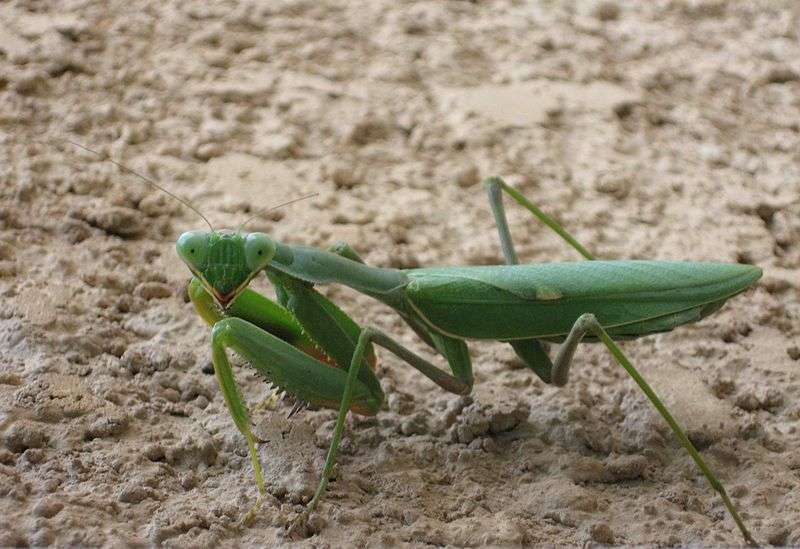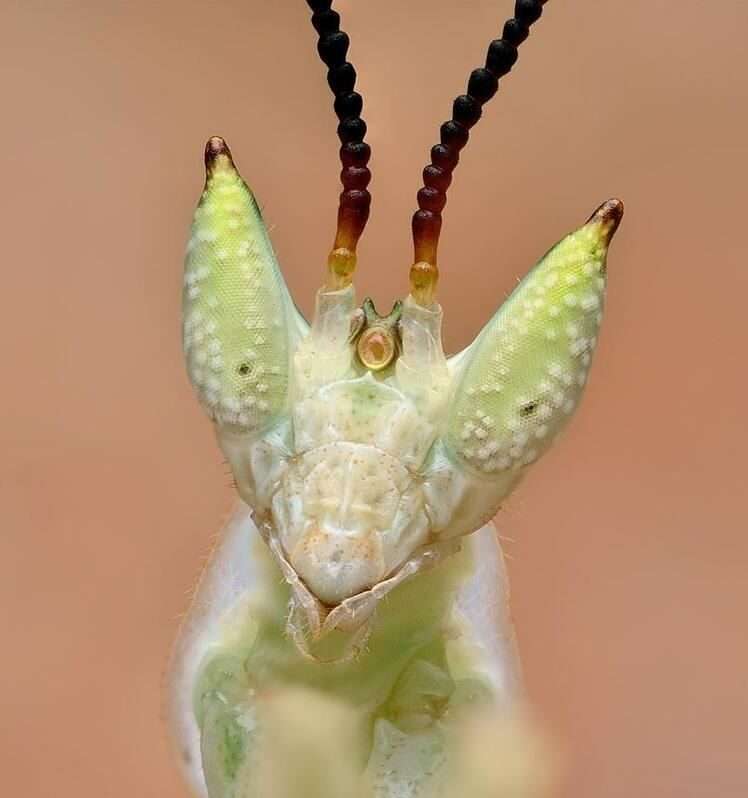
Description
Scientific Name: Blepharopsis mendica
Lifespan: About 1 year
Although this species is also known as the Small Devil’s Flower Mantis, this name should not be used since it could be mistaken for the Devil’s Flower Mantis (Idolomantis diabolica). As an adult, this type of praying mantis is creamy-white to beige in colour with light green stripes and “veins” on its wings. This mantis has a tiny, pointed shield on its back, under which the forearms are held. Orange and blue patches with white edges can be seen on the inside of the front legs.
To scare off predators, these colors are shown in a frightening manner. The wings of the more slender males extend somewhat over the end of the abdomen. The prothorax of the females is wider, and their wings only reach the end of the abdomen. Adult males have feathered antennae (antennae with huge, thick “hairs” on it), whilst females have slender antennae.
Habitat
Beautiful praying mantis species from North Africa and the Canary Islands include the thistle mantis, or more precisely Blepharopsis mendica. This species inhabits terrestrial habitats with prickly shrubs and herbaceous vegetation. Due to their colouring, they are particularly suited for mimicking leaves, prickly or dry plants, and desert flora.
Behavior
A peaceful species of praying mantis is called Blepharopsis mendica. They excel at collecting insects that are in the air. It carefully waits till an unexpected prey enters the scene while relying on its camouflage. Although not particularly aggressive, this species can be intimidated by large prey. In deimatic display, the adult maintains its wings slightly spread behind the body to give the impression that it is enormous and dangerous by rotating its head and thorax to one side and exposing the vivid colors on the insides of its forelegs and the undersides of its hindwings.
Keeping as a Pet/ In Captivity

Housing
Because mantis are arboreal—they naturally climb—and will readily do so in their enclosure, a tall enclosure will be needed. A minimum enclosure size of three times the mantis’ height and twice its width is advised for nymphs, so a one-inch mantis would need a three-inch-tall by-two-inch-wide space. Before your mantis molts into an adult, keep the enclosure out of direct sunlight and draughty regions and avoid over decorating it. A fancy, excessively adorned enclosure could cause a mismoult that could be fatal.
This mantis cannot climb glass or plastic, thus adding tissue to the enclosure’s sides is advised. Using organza mesh across the top of the enclosure offers for good ventilation as well as a surface from which the mantis can hang.
Substrate
Nymphs should utilize paper towel, while adults should decorate their enclosures with dried leaves.
Daytime highs of 93 °F (34 °C) and no lower than 69 °F (21 °C) at night.
Humidity
30 to 40% humidity
This is crucial, therefore just mist your mantis once a week to let it to drink. Excessive humidity and poor ventilation frequently cause death It will get all the moisture it needs the remainder of the time from its live meal.
Feeding
Mantis naturally eat flying insects, and most breeders will suggest avoiding crickets completely because they are known to transmit a bacteria that can be fatal to mantis. Fruit flies, curly-winged flies, and green bottles can all be purchased in caster form at fishing shops, and fruit flies and curly-winged flies can be purchased online or in exotic pet stores. Since they have been carefully bred to be incapable of flight, curly winged flies will be simpler to control than casters. If you do decide to use casters, store them in the refrigerated first, then remove a few and put them in a container with a pooter hole and extremely small ventilation openings so the adult flies can’t get out. This will prevent them from all emerging at once.
In about three days, if you put them somewhere warm, they should start to grow. To make sure your mantis has a consistent supply of food, take a fresh batch of casters out each day. Green bottles can be removed from the tub most easily if you put them back in the refrigerator for 10 to 20 minutes so they are sleepy and are simpler to handle with feeding tongs.
Table





